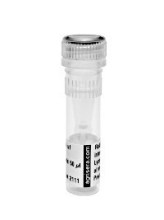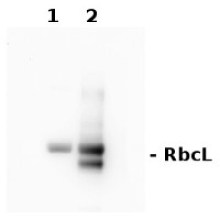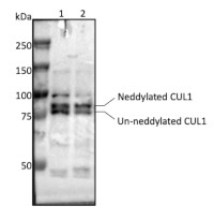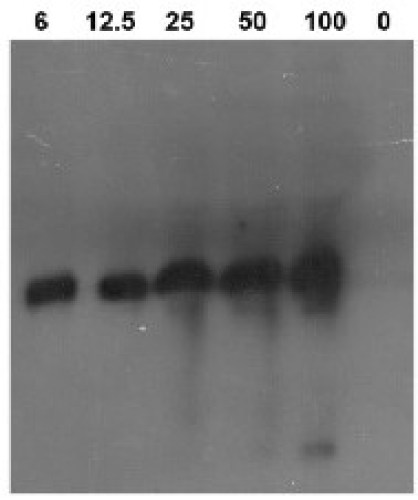
Anti-PR-3 / CHN | Class I chitinase
(Cat#: AS07 207)
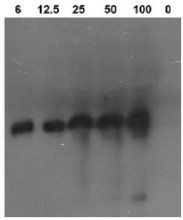
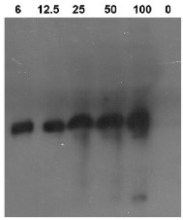
Description
- Immunogen: Purified tobacco class I chitinase. The preparation used is a mixture of two class I isoforms (Shinshi et al., 1990; van Buuren et al., 1992): 1) Chitinase A (CHN A) P08252 encoded by gene chn48 derived from the N. tomentosiformis ancestor of tobacco. 2) Chitinase B (CHN B) P24091 encoded by gene chn50 derived from the N. sylvestris ancestor of tobacco.
- Host: Rabbit
- Clonality: Polyclonal
- Purity: Total IgG. Protein G purified in PBS pH 7.4.
- Format: Lyophilized
- Quantity: 2 mg
- Reconstitution: For reconstitution add 100 µl of sterile water
- Storage: Store lyophilized/reconstituted at -20°C; once reconstituted make aliquots to avoid repeated freeze-thaw cycles. Please remember to spin the tubes briefly prior to opening them to avoid any losses that might occur from material adhering to the cap or sides of the tube.
- Tested applications: Co-Immunoprecipitation (IP) (Co-IP), Immunolocalization (IL), Western blot (WB)
- Recommended dilutions: 8 µg/ml (WB)
- Expected | apparent MW: 35, 34 | 32 and 34 kDa
- Confirmed reactivity: Agostis stolonifera cv. ‘Penncross’, Capsicum annuum, Nicotiana tabacum, Picea abies, Solanum esculentum, Solanum lycopersicum, Solanum tuberosum, Vitis vinifera
- Not reactive in: No confirmed exceptions from predicted reactivity are currently known
- Pathogenesis-related (PR) proteins, are induced in response to the infection of plants with microbial pathogens. Combinations of glucanase I and chitinase I are potent inhibitors of fungal growth in vitro however precise mechanism of that is still not known. Glucanase I (PR-2) and chitinase I (PR-3) contribute to defense against fungal infection and are currently used as markers for innate immunity, and in particular the ethylene/jasmonate signalling pathway in pathogenesis.
- Mansilla et al. (2020).- Characterization of functionalized bentonite as nanocarrier of salicylic acid with protective action against Pseudomonas syringae in tomato plants. Eur J Plant Pathol 158, 211?222 (2020). https://doi.org/10.1007/s10658-020-02067-wColman et al. (2019). Chitosan microparticles improve tomato seedling biomass and modulate hormonal, redox and defense pathways. Plant Physiology and Biochemistry Volume 143, October 2019, Pages 203-211. Kumari et al. (2017), Overexpression of a Plasma Membrane Bound Na+/H+ Antiporter-Like Protein (SbNHXLP) Confers Salt Tolerance and Improves Fruit Yield in Tomato by Maintaining Ion Homeostasis. Front Plant Sci. 2017 Jan 6;7:2027. doi: 10.3389/fpls.2016.02027.Jespersen et al. (2017). Metabolic Effects of Acibenzolar-S-Methyl for Improving Heat or Drought Stress in Creeping Bentgrass. Front Plant Sci. 2017 Jul 11;8:1224. doi: 10.3389/fpls.2017.01224. eCollection 2017. (western blot, Agostis stolonifera cv. ?Penncross?)Ko et al. (2016). Constitutive expression of a fungus-inducible carboxylesterase improves disease resistance in transgenic pepper plants. Planta. 2016 Aug; 244(2):379-92. doi: 10.1007/s00425-016-2514-6. Epub 2016 Apr 13.
- Important note: For blocking 5% skim milk in PBS without Ca++ should be used. This antibody is purified by affinity chromarography on Portein G.
Boca Scientific is your premiere source for high-quality, innovative solutions for Cell Biology, Molecular Biology, Immunology, genetics and other lab products and reagents. We bring leading-edge products from our own-line and around the world to laboratories in the US and Canada. Our goal is to offer excellent solutions to drive research and discoveries backed by superior customer support.

